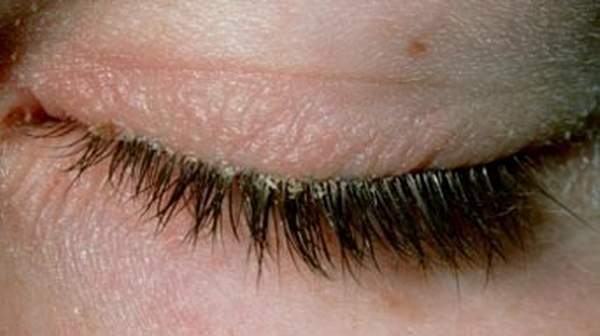What's in this article?
Blepharitis is an inflammation of the eyelids, usually caused by an excess growth of bacteria that is ordinarily found on the skin, blockage of the eyelid’s oil glands, and occasionally allergies.
What Are the Symptoms of Blepharitis?
The symptoms of blepharitis include:
- Feeling like something is in your eye
- Burning of the eye
- Sensitivity to light
- Red and swollen eyes or eyelids
- Blurry vision
- Dry eyes
- Crusting of the eyelashes

Blepharitis is a common eye condition, causing the eyelids to be reddened, itchy, and somewhat swollen and scaly-appearing at the base of the eyelashes. It is the most common cause of dry eyes. A dysfunction of the eyelid’s oil glands that leads to blepharitis occurs because of a hormone imbalance.
How Is Blepharitis Treated?
Blepharitis cannot be cured. However, it can be treated and controlled through proper eyelid hygiene. Left untreated, blepharitis can cause more serious conditions such as scarring or injury to the eye’s tissue. If you have blepharitis, take the steps listed below to help treat and cleanse your eye:
- Take a clean washcloth and wet it in very warm water. Wring the washcloth and place it over the closed eyelids for five minutes. Re-wet as necessary to maintain desired temperature. This will help to soften crusts and loosen oily debris.
- Place the warm, wet washcloth over the index finger and apply a diluted solution of 50% baby shampoo or mild soap.
- Cleanse one eye at a time, closing the eye you are cleansing, and rubbing the washcloth or your finger over the eyelashes and lid margins several times using horizontal strokes.
- Rinse thoroughly with a clean, warm, wet washcloth. Pat dry.

If the blepharitis is related to a problem with the oil glands, treatment may involve applying testosterone eye cream to the eyelids. Your doctor may also suggest a procedure known as LipiFlow, a 12-minute procedure that gently heats the clogged glands and applies mild pressure to “milk out” the unhealthy gland oils.
How Do I Prevent Blepharitis?
There are many everyday steps that you can take to prevent blepharitis. This includes removing all eye makeup before bedtime and not applying eyeliner on the back edges of the eyelids behind the eyelashes.
If you are in the early stages of treating blepharitis, avoid the use of eye makeup to prevent further irritation. Once you begin using makeup again, replace your products used in or near the eyelids because they may be contaminated.





